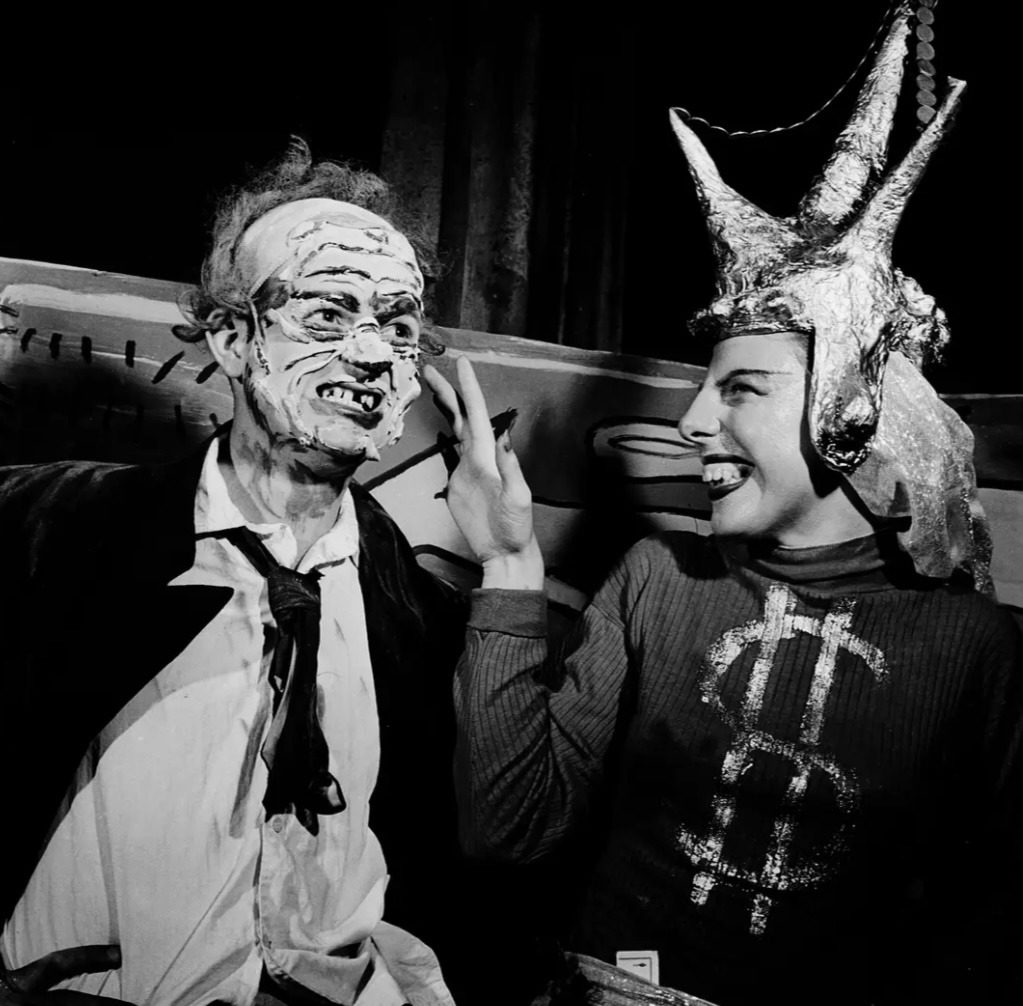
Is it too early to start getting ready for Halloween? For those of us who love making our own costumes, the first breath of fall comes with a thrilling and intimidating question: what will I be this year? Whether you are a seasoned costumer or a last minute diy-er, we are excited to invite you to make a hand-sewn animal mask with us during an in-person class on October 26th! Join Patti Gilstrap and Kerchuan Soong for a cozy fall evening of stitching and learning at Tatter.

Masks and costumes have been important and beautiful ritual objects all around the world and throughout history. The modern Halloween mask has a long and muddled history, dating back to at least the 16th century and claiming both Christian and pre-Christian origins. The oldest examples of people dressing up in costumes and going door to door collecting sweets on October 31st is first recorded in Ireland on the eve of Samhain, the Pagan celebration which marks the end of the Harvest season on November first. ‘Samhain’ was celebrated in Ireland and Scotland as well as in Wales, Cornwall, and Brittany where it is called ‘Calan Gaeaf.’ By the Victorian era, Halloween became a more private celebration in which people would dress up and host parties; it was not until the 1910s that the practice of going door to door was revived in Canada and spread through North America.

For the majority of Halloween history, from Renaissance trick-or-treaters to Victorian party-goers, costumes have been simple, spooky, and homemade. It was not until the 1930s that the costume industry began to emerge, mass-producing costumes and decorations for both children and adults which range from scary creatures to iconic superheroes. In 2022, Americans spent an estimated $10.6 billion dollars on Halloween costumes, decorations, and candy. The material waste and environmental cost of cheap disposable costumes is enormous, especially because many costumes are discarded after a single use. While in recent years there has been societal pressure to be mindful of cultural appropriation, many of these mass-produced costumes still promote racist or fetishized caricatures of marginalized people.

Making your own Halloween costumes is not only a fantastic creative outlet or a chance to impress your friends and neighbors– it is also an act of resistance against the material culture which encourages us to treat our clothing and those who make it as disposable. While we hope you will have a chance to wear your handmade mask on Halloween, we also hope that you will find joy in it year-round. Whether for display or special occasions, our goal is that you will learn something new and end up with a beautiful and lasting piece of art made from sustainable natural materials.
We asked our teachers to tell us a little bit about their experience of Halloween, art, and mask making– you can see our conversation below!
What is your thought process while making a mask? Do you have a finished product in mind or is it more fluid?
Patti: I think about the shape and the positioning of the ears as they can change so much about the animal and its mood. I like to keep it fluid and enjoy the process of seeing the 3d shape emerge.
KC: The design of the mask, specifically the little nose, came from playing around with fabric scraps as if they’re origamis. I prefer making a few sketches first, but ultimately letting the materials tell me what to do.
How do you celebrate Halloween? What is your favorite costume you’ve ever worn?
Patti: I love to give out candy and take in peoples costumes, the more handmade the better for me! One year as a kid I was a flower with big fabric and wire petals and a vintage swim cap on my head as the center. My mom and I made it together.
KC: The brainstorming typically starts in August, and the costume making can take up to the last hour before the party. It’s the perfect time of the year to make something for myself. My favorite costume was a hand sewn sardine mask that I made during the pandemic for feeling a bit stuck, like a canned fish.
Is there anything you’d like people to know about your art and your process?
Patti: I like to gather materials, have a nugget of an idea and then give myself time to experiment. I like to use materials in unintended ways and let myself be ok when things don’t work as I still learned something by trying it out.
KC: I focus heavily on sustainability and try to source materials from what I already own or secondhand. What started out as a limit often allowed me to see materials in a different light and let the process be more playful.


You can sign up here to join us! We hope to see you there.
